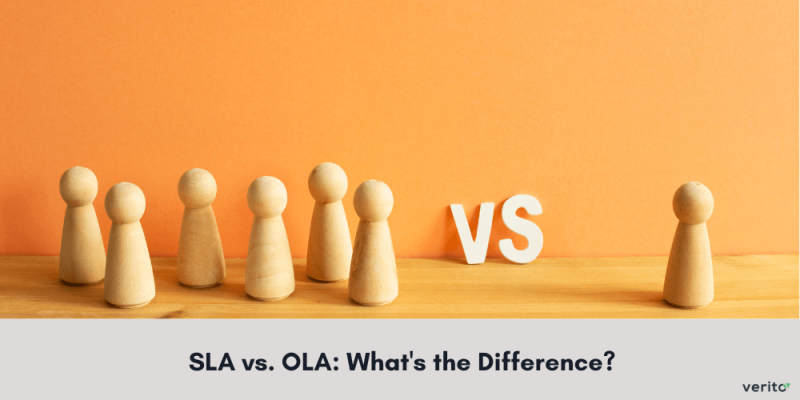The global accounting services market is estimated to reach $1.5 trillion by 2032 (Source), and this is where practitioners do the hard work. These professionals are akin to master chefs crafting a gourmet meal. Consider the meticulous coordination required in a bustling kitchen, where each chef and kitchen staff member plays a vital role in delivering a culinary masterpiece. For Certified Public Accountants (CPAs) and tax/accounting firms, handling financial processes with precision is akin to the choreography of a high-end kitchen.
Just as a chef plans each course meticulously to ensure that the timing, quality, and presentation align seamlessly, CPAs and accounting firms navigate through different aspects of financial management. At the heart of this culinary metaphor lie two essential recipes—Service Level Agreements (SLAs) and Operational Level Agreements (OLAs).
Much like a chef’s recipe ensures the consistency and excellence of each dish, these agreements act as the guiding principles in the world of financial services. Wondering what these two terms mean and want to dive deeper being a part of the tax/accounting industry? Let us help you with that.
What is an SLA?
A Service Level Agreement (SLA) is a formalized contract between tax/accounting firms (also CPAs) and their clients. It outlines the specific service commitments and expectations and delineates the scope of services, performance metrics, and the quality standards to be upheld. It serves as a comprehensive roadmap that ensures both parties are on the same page regarding deliverables, timelines, and the overall service experience.
Here are some of the key components of an SLA:
- Service scope that clearly defines the range of services to be provided
- Performance metric that establishes measurable criteria for evaluating service quality, efficiency, and effectiveness
- Response times to specify the expected timeframes for acknowledging and addressing client queries, issues, or service requests
- Acceptable uptime and downtime to the availability of services and measures to minimize disruptions
- Penalties for failure to meet agreed-upon service levels and potential rewards for exceptional performance
- Communication protocols to establish guidelines for effective communication channels, frequency of updates, and reporting mechanisms
In essence, an SLA can act as the backbone of client-provider relationships, ensuring transparency, accountability, and the delivery of high-quality services.
Also Read: All About Section 314.4 of the FTC Safeguards Rule
What is OLA?
Operational Level Agreement (OLA) is an internal agreement for tax/accounting firms outlining the specific responsibilities and processes among different functional teams. The culinary metaphor used above can be likened to the synchronized efforts of various kitchen stations, each responsible for specific tasks to ensure the overall success of a gourmet meal.
Some of its key components include
- Interdepartmental responsibilities of different operational teams to ensure a streamlined workflow
- Dependencies and relationships between various operational functions to emphasize the need for collaboration and seamless integration
- Escalation procedures to outline the process for escalating issues or challenges within the operational framework
- Performance standards that set internal benchmarks for operational efficiency
- Resource allocation process to specify how resources, including personnel and technology, are allocated among different operational units to optimize efficiency
Now that you have a clear understanding of their individual definition, let’s cover their differences.
SLA vs OLA: Primary Differences
| Parameter | SLA | OLA |
| Nature | External-facing contract between a CPA firm and its client | Internal agreement among operational teams within a firm |
| Target | Client or external stakeholders | Internal departments and teams |
| Purpose | Defines client expectations, service standards, and metrics | Establishes internal processes, responsibilities, and workflows |
| Scope | Outlines the overall service package and deliverables | Focuses on internal operational functions and collaboration |
| Responsibilities | Specifies client and provider roles and obligations | Clarifies interdepartmental responsibilities and workflows |
| Enforcement | May include penalties or rewards for meeting or failing to meet service levels | Primarily ensures internal compliance and efficiency |
| Flexibility | Subject to negotiation and adaptation based on client needs | Internally controlled and adjustable for operational efficiency |
| Communication | Defines external communication channels and protocols | Establishes internal communication frameworks and escalation procedures |
How to Write an SLA?
Writing a comprehensive SLA involves a systematic approach to ensure clarity and alignment of expectations. You can follow these key steps to write yours:
- Start with a concise introduction, including the purpose of the SLA, completion and signing dates, and a summarized index. Consider including pricing details to set the financial context.
- Clearly outline the parties involved, both internally (individuals, teams, and departments providing the service) and externally (customers or clients). Categorize entities for clarity, especially in complex, multi-organizational SLAs.
- Enhance understanding by defining complex or technical terms in simple, accessible language. This step is crucial for SLAs dealing with intricate software or specialized terminology.
- Specify the services provided, detailing service delivery methods, maintenance schedules, ticketing policies, and outsourcing guidelines.
- Conclude the SLA with an acknowledgment section where both parties sign to confirm acceptance of the outlined terms.
Recommended Read: Risk Management for Accountants – Why Does It Matter?
How to Write an OLA?
Similar to an SLA, crafting an effective OLA requires careful consideration of internal processes and responsibilities. Here are a few steps you can follow to create a robust OLA:
- Begin with an introduction emphasizing the OLA’s role in aligning team expectations and holding departments accountable. Clearly convey how the document facilitates internal collaboration and service delivery.
- Identify essential individuals, teams, and departments crucial to service provision.
- Organize multiple OLAs by including the customer for each service, fostering clarity and accountability.
- Specify the duration of the agreement to establish and maintain a schedule for internal processes. Align this timeline with the agreed-upon duration outlined in the corresponding SLA to synchronize internal and external expectations.
- Group internal parties by responsibility type (e.g., customer service, technical support, accounting) and outline specific responsibilities for each.
This way, you can create a comprehensive OLA that enhances internal cohesion, clarifies responsibilities, and contributes to the overall success of your business.
FAQs
What is the primary difference between an SLA and an OLA?
The main distinction lies in their focus and audience. An SLA is an external-facing contract outlining commitments between you and your clients. In contrast, an OLA is an internal agreement among different operational teams within the firm.
Why are SLAs essential for tax and accounting professionals?
SLAs can help define client expectations, service standards, and performance metrics. They may even serve as a roadmap for service delivery, fostering transparency, accountability, and client satisfaction.
How do OLAs contribute to operational efficiency in a tax or accounting firm?
OLAs can help enhance internal cohesion by defining responsibilities among different operational teams. They specify roles, outline dependencies, and set performance standards. This will foster streamlined processes, efficient collaboration, and ensure that internal workflows align with the commitments made in SLAs.
Can SLAs and OLAs be adapted for different-sized tax or accounting firms?
Both SLAs and OLAs are adaptable documents that can be tailored to suit your business-specific needs and scale of a firm. The principles of defining service expectations (SLAs) and streamlining internal operations (OLAs) remain applicable, albeit with adjustments based on the scale and complexity of the firm.







